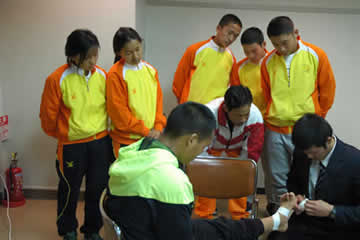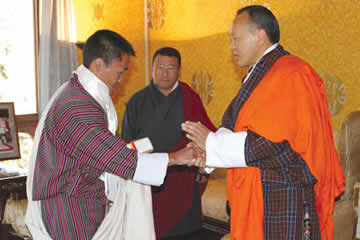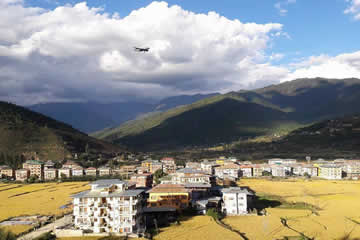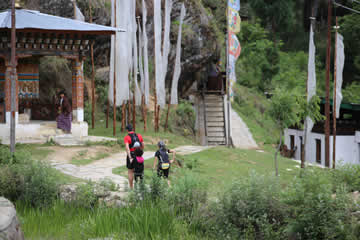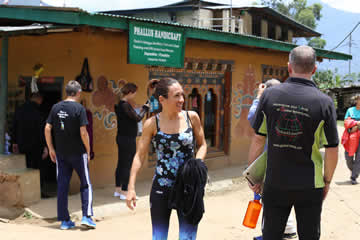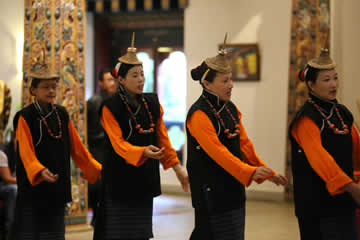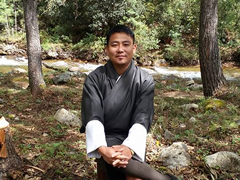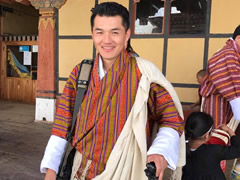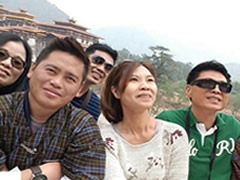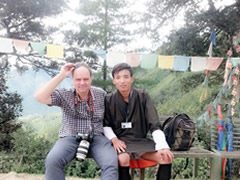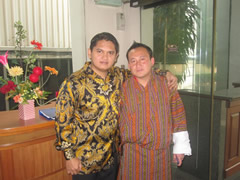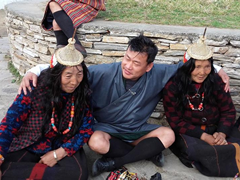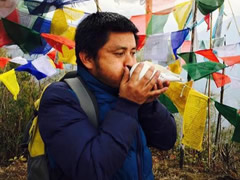Bhutanese food or food of Bhutan is un-like any other food you’ll ever eat and the most distinctive characteristic of Bhutanese cuisine is its spiciness. so that's why Bhutanese curry is incomplete without chilli.
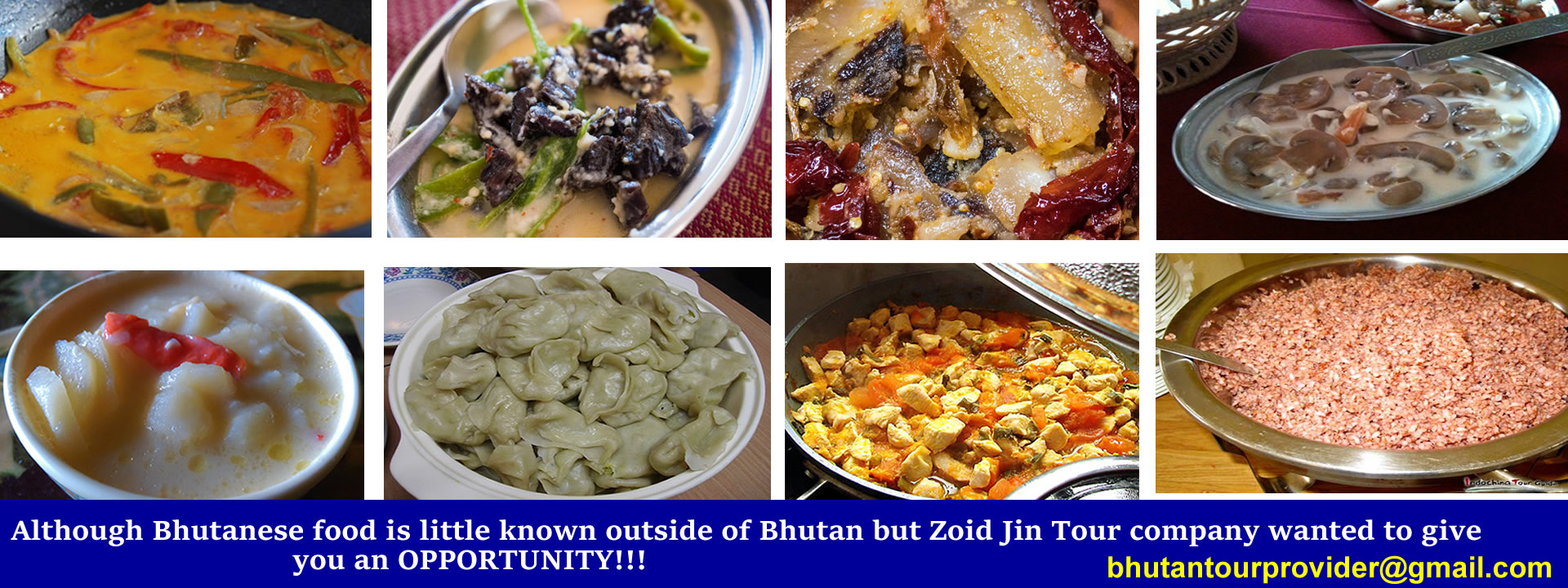
Rice forms the main body of most Bhutanese meals. It is accompanied by one or two side dishes consisting of meat or vegetables. Pork, beef and chicken are the meats that are eaten most often. Vegetables commonly eaten include Spinach, pumpkins, turnips, radishes, tomatoes, river weed, onions and green beans. Grains such as rice, buckwheat and barley are also cultivated in various regions of the country depending on the local climate.
While visiting Bhutan please take note's of the following list of Bhutanese food items so that our Zoid Jin Tours guide will arrange for you according to your choices:
1. Ema Datshi
Ema Datshi : which is chilies and cheese is the national dish of Bhutan. You’ll eat ema datshi not only everyday when you’re in Bhutan, but likely for just about every meal when you’re in Bhutan. The chilies, which can be either fresh green chilies or dry red chilies, are sliced lengthwise, and cooked with datshi, which is local Bhutanese cheese, and plenty of butter for good measure.
2. Kewa Datshi
Kewa Datshi is another Bhutan food that most of the people really grew to love. It is comprised of cheese (“datshi”) and potatoes (“kewa”). The potatoes are typically sliced into thin pieces, then sautéed down with cheese and lots of butter. Sometimes cooks will toss in a few chilies or tomatoes, but usually, this is a Bhutanese dish that’s pretty mild, but just focuses on potatoes and cheese.
3. Shamu Datshi
Shamu Datsi (Bhutanese cheesed mushroom recipe) is same to that of Ema Datshi and Kewa Datshi but the main ingredients change from Chilli to Potatoes to Mushroom.There are over 300 different varieties of mushroom which are native to Bhutan.
4. Momos
These Tibetan-style dumplings are stuffed with pork, beef or cabbages and cheese. Momos are also often served with ezay, a spicy chilli sauce for dipping and they are typically eaten by hand.You can get momos freshly steamed or also deep fried momos, which are fried in oil after being steamed.
5. Shakam Datshi
Shakam is Bhutan’s answer to beef jerky sort of Shakam is dried, preserved beef which is thicker and chewier to the taste than the traditional American style beef jerky. Shakam Datshi meaning dried beef with cheese is one of the famous curry in Bhutan and some prefer's to eat mixing with chillies.
6. Sikam Paa
Sikam Paa is a dried pork mixed either with dried chilli or green chilli. It is the traditional Bhutanese dish usually had during the special occasions such as new years celebrations with a large family.
7. Yaksha Kam
The yak meat is dried into a jerky like meat and it can be cooked in a number of different ways. It can be either with cheese and mushroom or fried with beans and sags.
8. Phaksha Paa
Pork cooked with spicy red chilli's. Phaksha Paa is a tasty and moderately spicy pork stew. Chopped up and added to the mix are bok choy, ginger, radishes and chili powder.
9. Jasha Maru
Jasha maru is Bhutanese chicken stew, or sometimes called a chicken curry. Jasha Maru is somewhat spicy or less spicy to the taste, and is prepared with a diverse mixture of chillies, ginger, garlic, coriander, and fresh vegetables.
10. Koo ( Skin)
Koo is a skin of either with cow or a yak. In Bhutan cow and a yak skin is very famous and if wanted to taste yak or cow skin then we have to order all in advance as it is difficult to get and also it takes time while cooking. It can be mixture of ginger , chilli powder and also with Spinach.
11. Goep ( Tripe)
Though the popularity of tripe is diminished in many of the countries but in Bhutan is very popular. slices of tripe stir fried with dried chillies, green onions, and sometimes small vegetables, is an excellent dish.
12. Juma
Juma is a kind of Bhutanese sausage made with minced meat, rice, and some light spices all filled into an intestines wrapper. Unlike in the western countries, juma is not used in hotdogs or along with buns. Juma is used independently according to taste and dishes can be prepared according to choice.
13. Gongdo Datshi ( Egg Cheese Curry)
Eggs, are scrambled up with datshi cheese, and a huge amount of butter, and in some cases small bits of dried chilli. It can be either in the form of soup but it was nevertheless quite good with rice. Bright red, unlike the other datshi dishes.
14. Khur Le
khur-le is a Bhutanese pancake made from buckwheat, wheat, or barley flour. What makes this the best snack in Bhutan is the spongy texture and delicious filling. Khur-le blends well with side dishes such as (poached) eggs, ezay (chili sauce), Goen hogay (cucumber salad) and even shakam datshi, a beef jerky, only it is thicker.
15. Goen Hogay
Goen Hogay is a cucumber salad which is very famous in Bhutan. You can make it, spicy or tangy even at the comforts of your home by slicing cucumber and adding a stir of other toppings like tomatoes, onions, cilantro, chili flakes, Sichuan and pepper. Try adding a pinch of cheese on top for extra flavor and a little olive oil or mustard (go on an experimental spree!).
16. Puta
Puta are noodles made from highly nutritious buckwheat that can be grown in high altitudes and is famous in Bumthang- central part of Bhutan. Much like the normal noodles, they are boiled and stir fried in mustard oil adding light seasoning of sichuan pepper and salt to taste. Puta is indeed a must try dish when in Bhutan.
17. Jaju
Jaju is a Bhutanese soup prepared with milk and vegetables – typically spinach or turnip leaves. You will often find that Bhutanese restaurant owners serve you a soup as a starter before your main dish, much like in the west, and so jaju makes a frequent appearance at the dinner table as a Bhutan food.
18. Lom
Turnips (Yung Dok in Dzongkha) or Brassica Rapa (for those who are botanically minded) are a prominent root vegetable in Bhutanese cooking. Lom can be preserved and eaten in Bhutan throughout the year.
19. Hoentay
Known especially for originating from Haa and Paro valley in Bhutan, hoentay are similar to momos, but they are made with a buckwheat dough wrapper. The dumplings are usually filled with a combination of a local spinach or turnip leaves and cheese, and again, they can either be steamed or fried.
20. Red Rice
Bhutanese red rice is a medium-grain rice grown in the Kingdom of Bhutan in the eastern Himalayas.It has a low Glycaemic Index, enriched with essential minerals and dietary fiber. Bhutan Red rice is unhulled or partially hulled rice that includes a red husk. The germ of the red rice is left intact, it has a higher nutritional value, with a nutty flavor to boot.
BENEFITS OF RED RICE - Anthocyanin
The flavonoid that gives the Bhutanese red rice is distinct red hue is called anthocyanin. It acts as a powerful antioxidant; possibly help reduce the spread of cancer cells and even inhibit the formation of tumors.
Anthocyanin is also good for the skin because its antioxidant properties help to delay the signs of aging. Research has also shown that a diet rich in anthocyanin can help to protect against skin cancer and various other skin diseases.
PACKED WITH NUTRIENTS
Bhutan red rice is full of important nutrients such as zinc, iron, calcium, magnesium. B vitamins, manganese, selenium, protein and potassium. It contains more zinc and iron than its white, black and brown rice.
GOOD CHOICE FOR DIABETICS
Bhutan red rice has a lower glycemic index and is, therefore, a great alternative for diabetics. Compared to standard rice's glycemic index of 70, red rice has a relatively low glycemic index of 55.
Bhutan red rice is a whole grain that is rich in fiber. Fiber is extremely important for digestion and it can help reduce the risk of heart disease by lowering blood cholesterol levels. Since fiber helps you to keep you full for longer, and red rice is also fat-free - the risk of obesity is also lowered.
